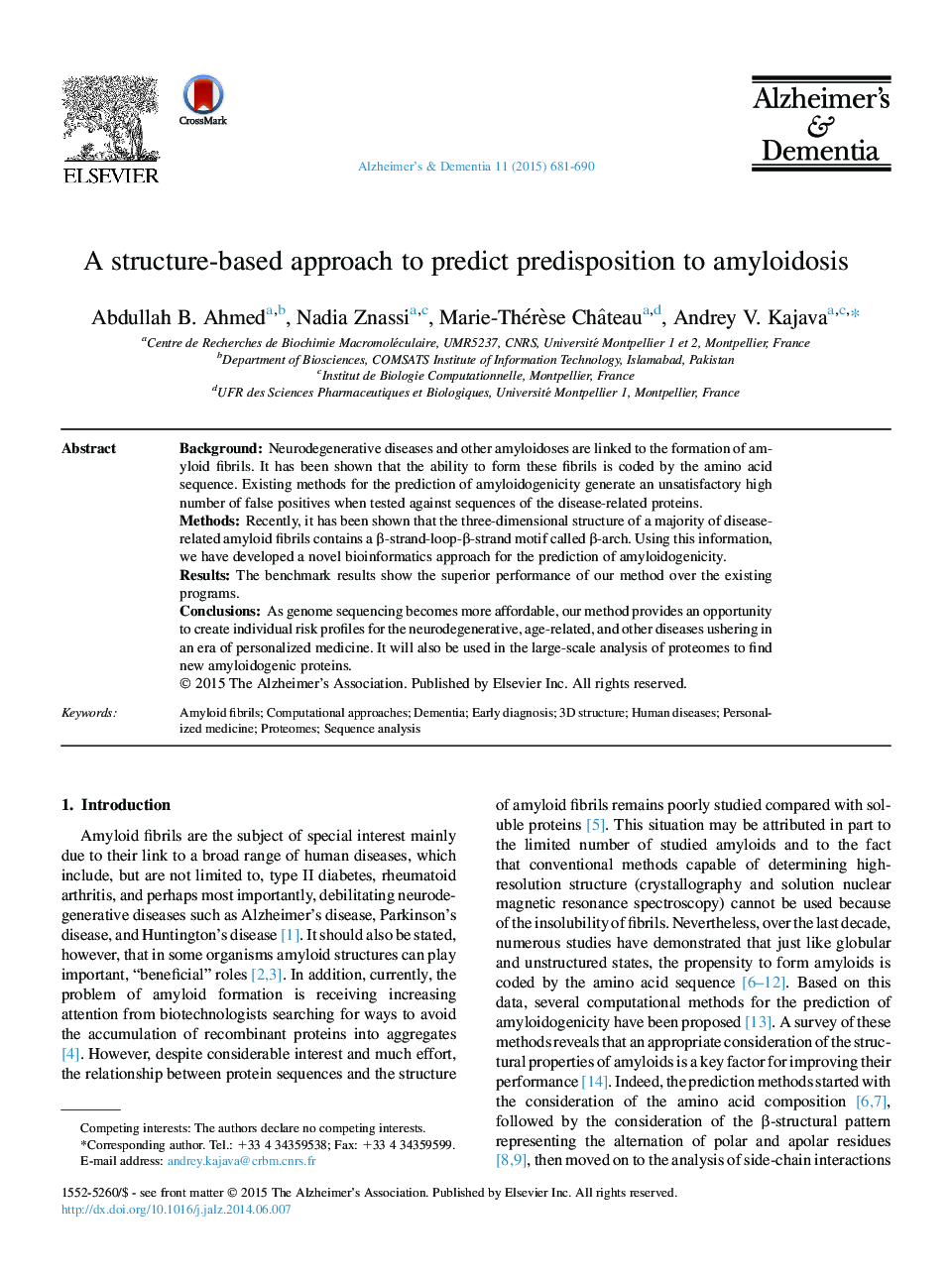| Article ID | Journal | Published Year | Pages | File Type |
|---|---|---|---|---|
| 5624262 | Alzheimer's & Dementia | 2015 | 10 Pages |
BackgroundNeurodegenerative diseases and other amyloidoses are linked to the formation of amyloid fibrils. It has been shown that the ability to form these fibrils is coded by the amino acid sequence. Existing methods for the prediction of amyloidogenicity generate an unsatisfactory high number of false positives when tested against sequences of the disease-related proteins.MethodsRecently, it has been shown that the three-dimensional structure of a majority of disease-related amyloid fibrils contains a β-strand-loop-β-strand motif called β-arch. Using this information, we have developed a novel bioinformatics approach for the prediction of amyloidogenicity.ResultsThe benchmark results show the superior performance of our method over the existing programs.ConclusionsAs genome sequencing becomes more affordable, our method provides an opportunity to create individual risk profiles for the neurodegenerative, age-related, and other diseases ushering in an era of personalized medicine. It will also be used in the large-scale analysis of proteomes to find new amyloidogenic proteins.
